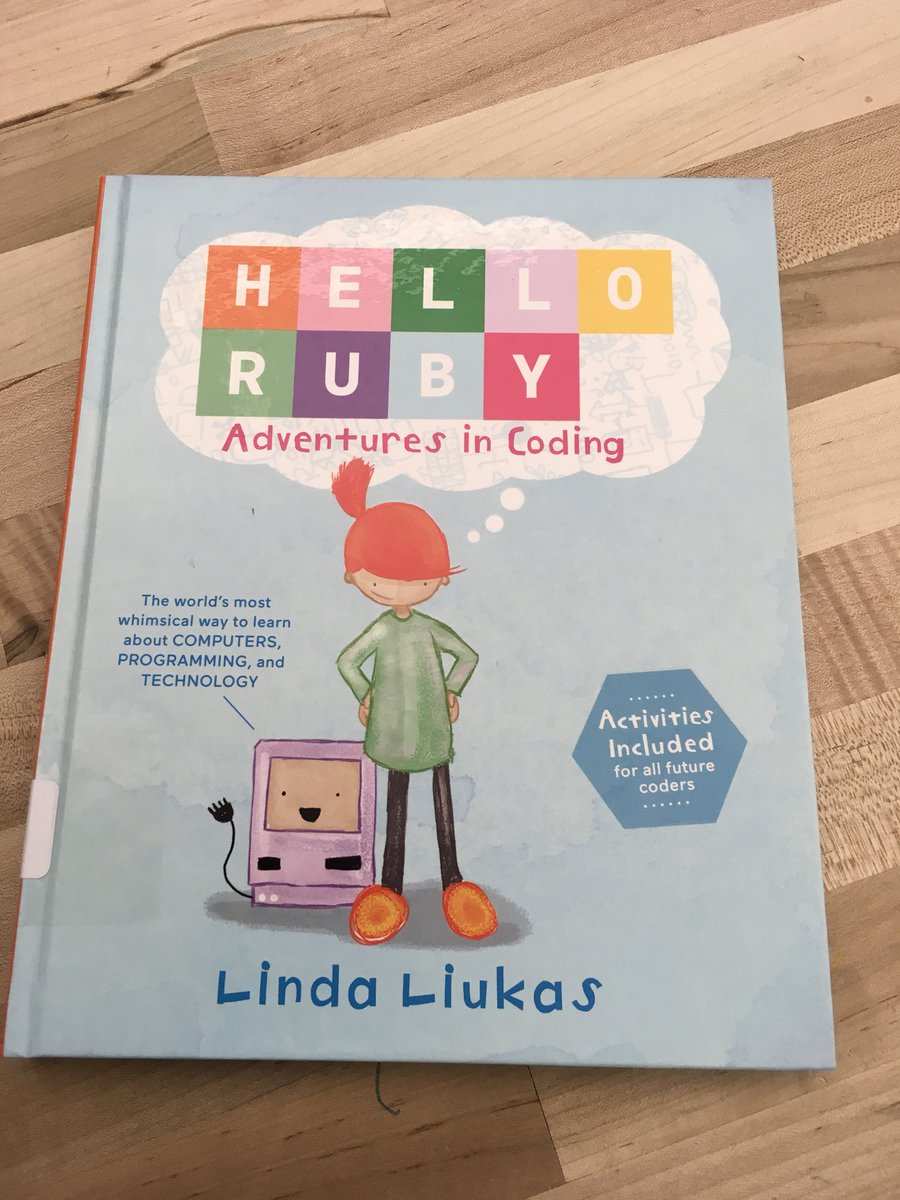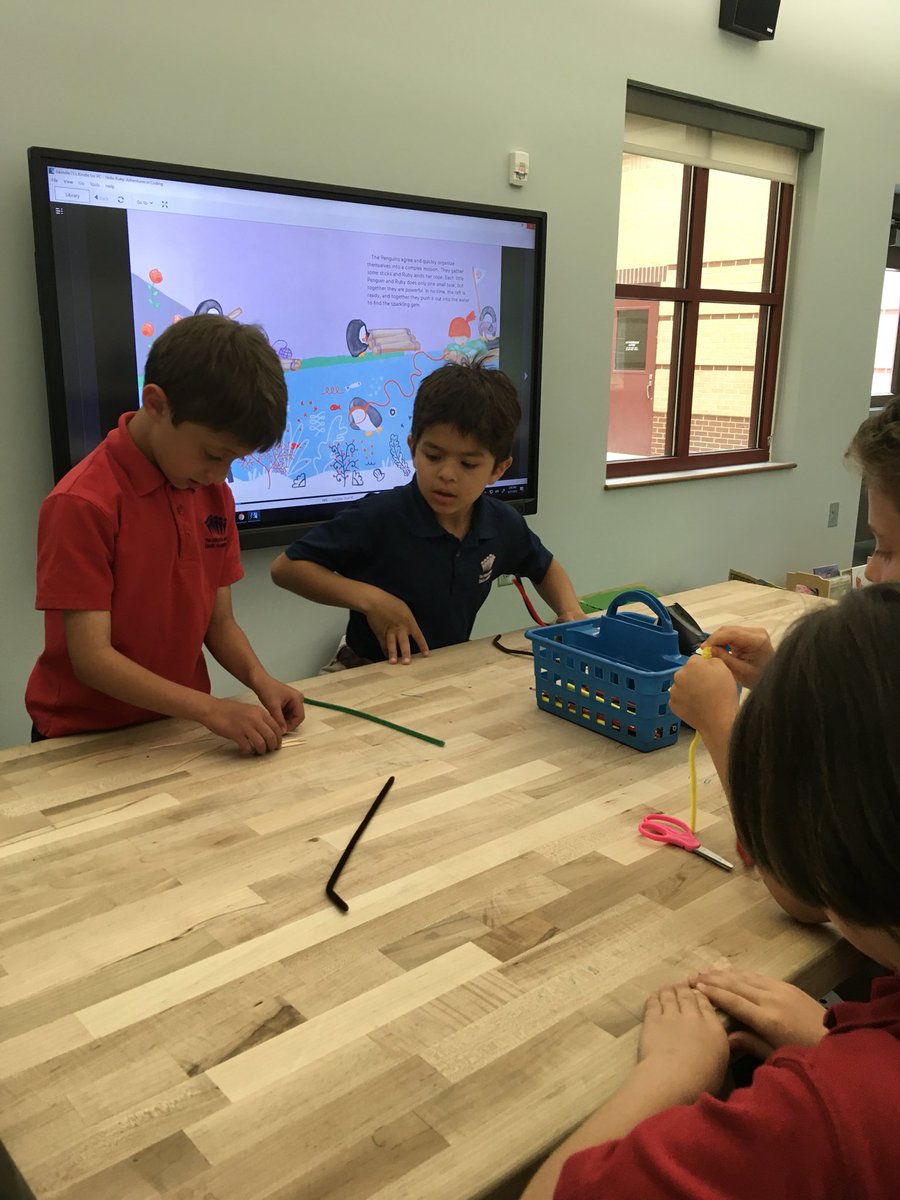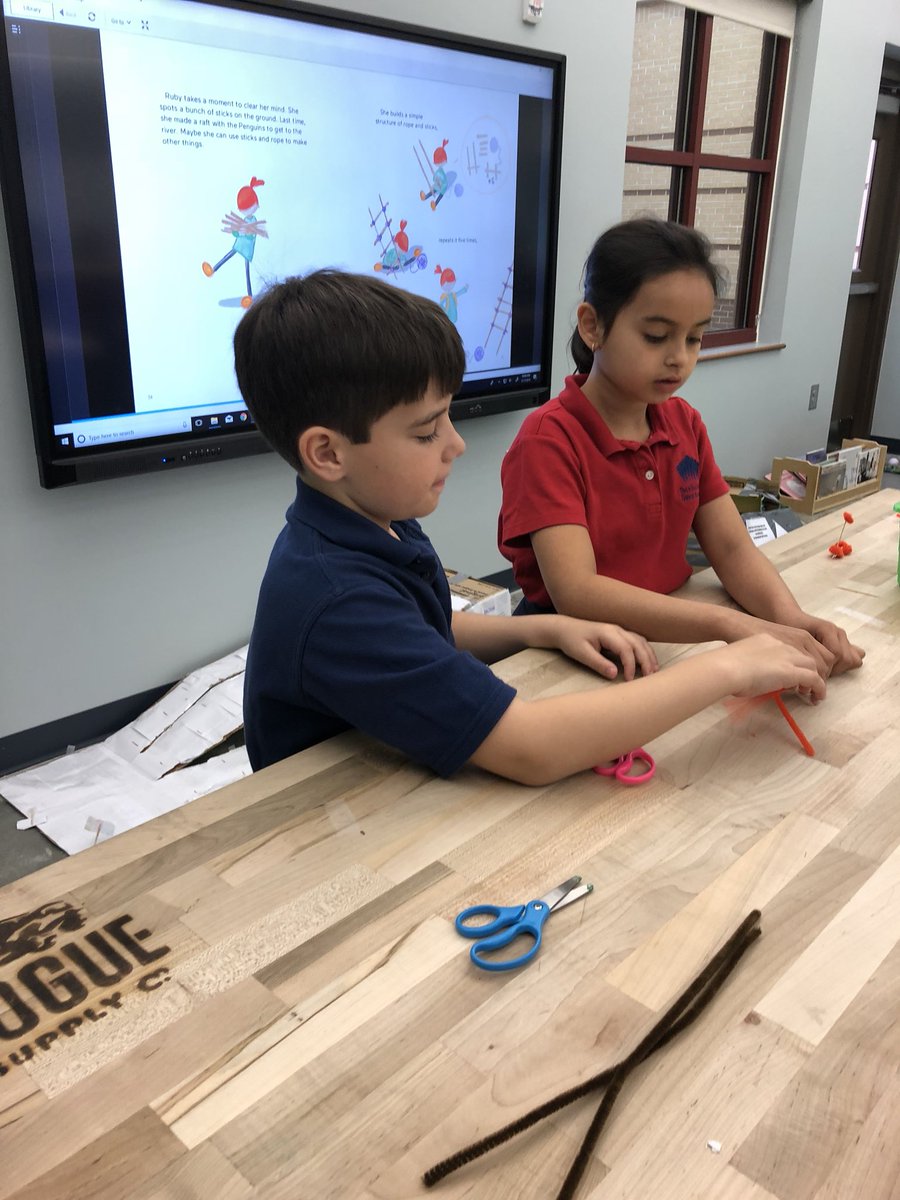I have embraced the merging of maker activities with literacy. I came across this fantastic series called Hello Ruby by Linda Liukas. Her books tell a fun story that take kids on a mystery-filled adventure while weaving in coding analogies with perfect stopping points throughout the story for mini-hands on design challenges.



All of these questions arise as students pause throughout the story and work together to accomplish their design challenges while learning new coding concepts. After each design challenge, we take time to reflect on our process so far: What was easy? What was challenging? What would we do different next time? Would this have been easier or harder with or without a team? As we consider what we have learned along the way, we learn to persevere.
Having purchased an ebook copy of the book, I shared the story in increments with the students. Ruby is on a quest to find a total of five gems left behind by her father while he is away on a business trip to help keep her occupied and to know that he is thinking of her. As Ruby journeys through the forest and meets interesting characters that teach about collaboration, loops, variables, debugging, and more, we pause throughout to attempt mini-maker challenges in seven minute increments to help Ruby along on her journey.

First, students are tasked with building a raft to help her get across the river. With only fourteen toothpicks and two pipe cleaners, resources are scarce. Working in pairs, students have seven minutes to build their raft with these limited resources. Can they do it?
As the story continues, Ruby realizes she needs a ladder to reach one of the higher gems. Again, students are challenged to build a ladder with only nine toothpicks and two pipe cleaners. No tape allowed. This is probably the most difficult task.

Finally, Ruby makes it to the river but realizes she needs to build a bridge to make it across. To do so, she can use six toothpicks and two pipe cleaners. Did she think to anchor her bridge to the bank of the river?

All of these questions arise as students pause throughout the story and work together to accomplish their design challenges while learning new coding concepts. After each design challenge, we take time to reflect on our process so far: What was easy? What was challenging? What would we do different next time? Would this have been easier or harder with or without a team? As we consider what we have learned along the way, we learn to persevere.
Third graders loved meeting Ruby and discovering how to collaborate to achieve their goals so that Ruby can obtain all five gems. In the end, Ruby learns that it isn't the gems that matter but rather it is the journey itself that becomes meaningful as she discovers how to work with others and make new friends. Interestingly, the students seem to reach the same conclusion.










